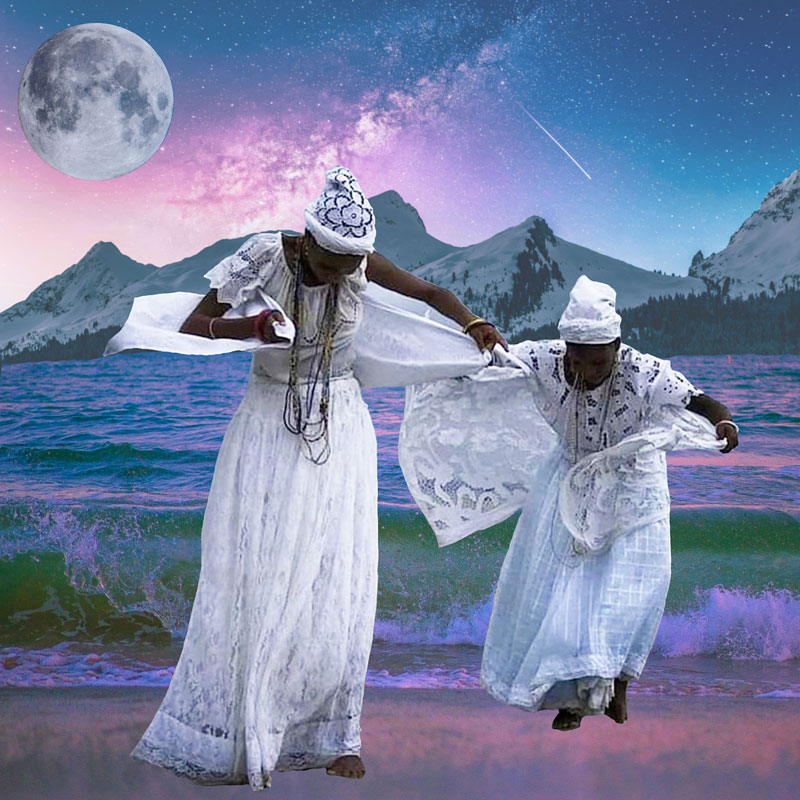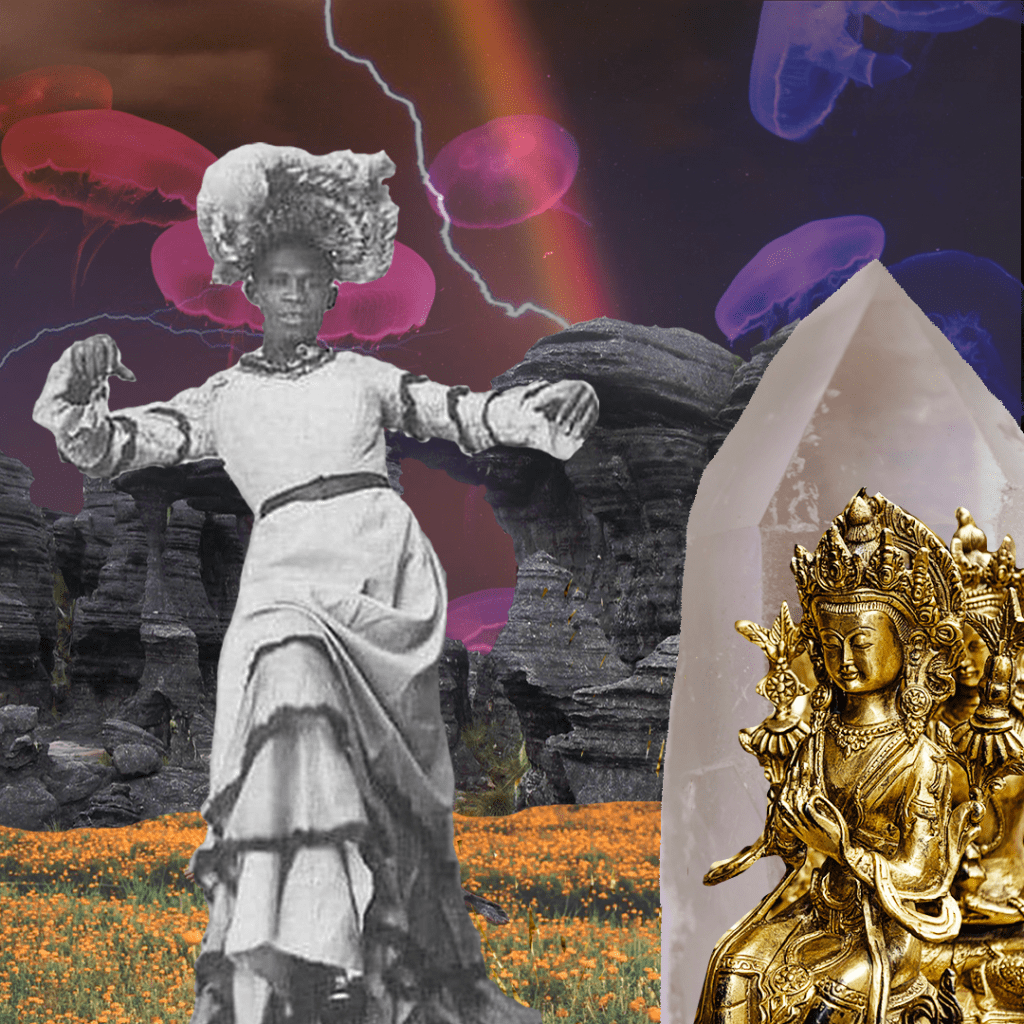
During the last year or so I have been exploring what it looks like for Black folks to imagine beautiful futures. Looking across various Black speculative traditions, art, music, films, etc. Asking these texts and their authors, what does imagination mean to Black folks and how do we do it? How have we done it? Below, you’ll find an incomplete list of practices that I’ve found to be core to the Black imagination as I have come to understand it. I know there must be so much more, and I’m excited to continue to explore. And I want to share what I’ve learned so far so we can get a head start on dreaming new worlds.
1. Rest.
Tricia Hersey of the Nap Ministry has been preaching the gospel of rest to us for years. Reminding us that hustle and grind are capitalist tentacles intended to prevent us from dreaming beyond the current systems. Rest is integral to dreaming and imagining and it is an act of refusal of the system that intends to work us to the bone, to use us up and then discard us. Deem yourselves worthy of rest, reclaim agency over your own time, honor the needs of your bodies. There is no dreaming without rest.
2. Make space. Declutter.
It’s hard to imagine the future when we are overwhelmed with our present. To make space to imagine, we can declutter our emotional and physical space by removing items in our closets and calendars that don’t “spark joy.” Create more space in your living situation where possible. These clear spaces in our homes and on our calendars allow ideas and vision to flow freely.
3. Ritual & Ceremony. Make everything sacred.
Morning rituals. Bath rituals. Bedtime rituals. Love rituals. Rituals of remembrance. Rituals are mindful practices of gratitude and self-love that we can do on a regular basis and that bring a sense of sacredness and spirituality to our lives. They connect us to ourselves and to other beings.

4. Petit Marronage. Retreat. Harness Fugitivity.
Sometimes we just need to get away. Get a change of pace. See new sights that can inspire new vision. Petit Marronage is a practice of temporary retreat where we can breathe, immerse ourselves in a new reality, and experience a glimpse of liberation.
5. Look back to go forward.
Connect with ancestors. Read revolutionary history. Explore African cosmologies. Retrace our many journeys and migrations. Read the words of those who have come before. So many seeds of the future we imagine lies in the fertile soil of our past.
6. Find a small group of committed people.
Surround yourself with a community of care, belonging, and becoming. Engage with friends in articulating together dreams of the future. Study together. Write manifestos. Declare a beautiful vision with other people and share your ideas and experiments. Learn together. Practice the society of the future in the way you treat each other.
7. Create a syllabus of reading, viewing, and listening resources.
Make a list of things you are curious about. Research books, films, and art related to those interests. Set aside time to read, view art, listen to podcasts etc. Take note of what resonates. Share with others.

8. Immersive, multi-sensory experiences.
Stimulate your senses by engaging in immersive experiences. Attend an immersive installation or create your own by running a warm bath with a scent (or no scent) of your choice. Put on some music and drink something delicious. The idea is to stimulate as many of your senses as possible at the same time.
9. Commune with your siblings in nature. Forest bathe. Submerge in water.
Connect with nature. Go hiking or swimming. Ease the borders between yourself and other beings.
Sign up for our free newsletters
Subscribe to NPQ's newsletters to have our top stories delivered directly to your inbox.
By signing up, you agree to our privacy policy and terms of use, and to receive messages from NPQ and our partners.
10. Daydream.
Spend some time letting your mind wander. I like to do it after waking up in the morning. Just lie there for a few minutes and let my mind go down all the passages and alleyways of itinerant thoughts without needing to commit to any action.
11. Ask yourself “What if?”
If you have a writing practice, give yourself the prompt “What if?” and question the status quo. Question things as they are and imagine them as they could be? Try new things. Experiment. Be curious? Start small and see where it takes you.
12. Consume fiction, futurist, and fantasy stories.
Read. Read. Read. Read books of fantasy and futurism. Through books and films, travel the worlds built by brilliant afro-futurists and fantasy authors. Watch Black sci fi fantasy movies. Explore afro-futurist and surrealist art and music.

13. Take up a daily creative practice.
Write, make art, paint, collage, dance, or play an instrument daily. Lose yourself in the creative practice. Create for the process, to learn, and to be in flow. Let go of any outcome or expectation. Fall in love with creating.
14. Re-imagine the past.
There’s a lot of urgency around creating alternative futures than those we seem to be on the trajectory towards. But have you tried re-imagining the past? Choose a point in history that interests you and ask yourself, what if that had never happened? Where would we now be? What if we had done that differently? What might have changed?
15. Errant Wandering.
Take yourself for a walk to nowhere. Let your body wander (safely, please). Let your instincts guide you on which way to go, which corners to turn. Discover new things about your town. Look at your neighborhood with eyes of wonder. There are so many hidden treasures in the places we call home.

16. Embrace the longer now and the bigger we.
Imagine yourself in the middle of an arc that stretches backward and forward 100 years. Think about the people who lived in your city or region 100 years ago. Who were they? What were they doing? Think about the people who will live in your city 100 years in the future. Who are they? What will they be doing? Think of yourself in connection to an ever-widening circle of connection. Imagine someone on the other side of the planet. Who might they be? What might they be doing?
17. Explore traditional African literary and aesthetic forms.
Read African authors. Explore African design and architecture. Learn about pre-colonial African societies.









